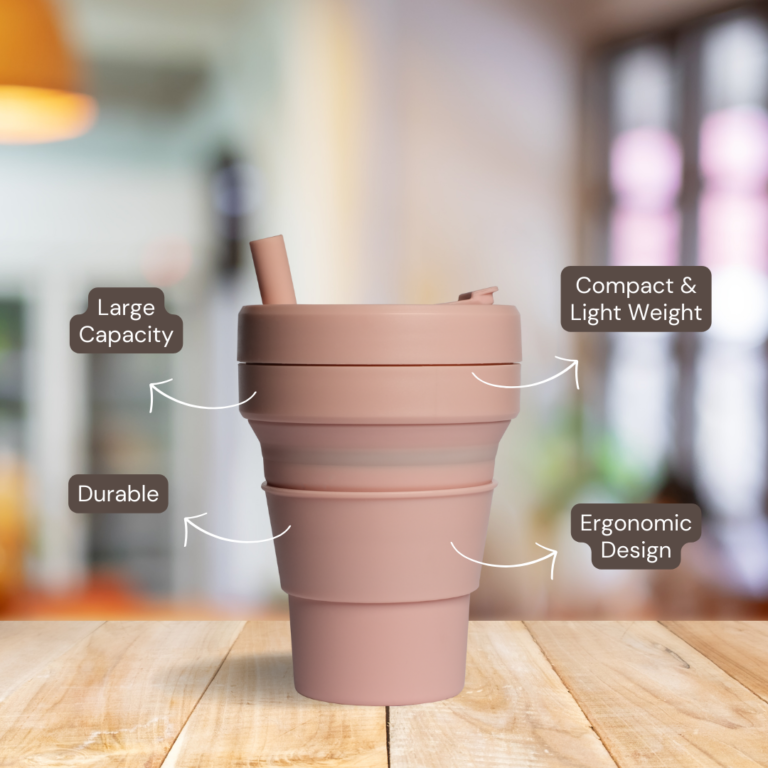Best Amazon PPC Tactics for Sellers in 2024: How PPC Advertising Works
Amazon PPC: Help increase product sales
The difficulty of the Amazon Promotional Items Campaign for six out of the ten Amazon sellers is widely recognized. The true challenge is in continually improving a campaign’s exposure, effectiveness, and success. Developing and launching an advertising effort is straightforward. Here most individuals make severe Amazon PPC errors that raise ACoS without providing appreciable profits on their stakes. You require certain Amazon PPC methods to make the best possible use of your advertising efforts, even if your product is great and your listing text is superb.
In light of this, we have put up this in-depth Amazon Marketing Planning, Plan for 2024. By using these suggestions, you may expand the market visibility of your company while promoting your listings and generating sales.
Amazon PPC Made Simple: A Step-by-Step Guide for 2024
1. Use Keywords to Work Yourself Up from the Bottom
This statement also applies to Sponsored Products on Amazon. Long-tail keywords are the best place to start your PPC adventure, regardless of just starting out as a seller on Amazon and introducing a new product. You should only advance in the pecking order and target the general, most-searched keywAords if you have achieved a certain degree of skill & profitability of long keywords.
This PPC approach succeeds since it will be challenging for you to compete with the market’s existing competitors as a new vendor. You will wind out investing many dollars without obtaining any visibility for your market, much alone conversions and traffic, if you target the most competitive and expensive keywords at the beginning of your campaign.
if your advertisements receive ad impressions, there is little chance that they will result in sales because your rivals are far more prominent and well-known in the business for those general keywords.
As a result, the strategy is very straightforward: start by going for long keywords because they will be easier to rank for. You may start focusing on those next-level keywords and progressively work your way up after customers begin growing more brand awareness if the goods begin to get a higher position in the market place SERP.
2. Rank Improvement
This method was developed in an effort to raise the position and placement of the item you are selling inside the Search Engine Results Page for a certain keyword. The plan is to run a total of 3 ad campaigns, each with drastically different budgets and bids.
The budgets and bidst allocated for keyword are determined by the position of listing for that phrase in search results.
The first step in this process is to keep track of the top search terms related to your listing. Implement the following strategy after analyzing your listing’s page position and rank:
It is advised that you concentrate solely on a small number of high-converting keywords on page five or page six of Amazon if the listing is there. By doing so, you may save concentrate and money on keywords.
Similarly, you may utilize an additional strategy that concentrates on the most effective KW as normal for those keywords that are included on the second, third, and fifth pages. Over time, you must maintain a steady bid and monitor which KW are generating the most revenue.
After that, use these keywords to appropriately optimize your advertising efforts. As these inquiries start to produce conversions, Amazon will instantly raise the natural rankings for those queries.
Finally, you should adopt an aggressive strategy for KW that appear on pages 2 and 1 of search results. You have to act as aggressively as you can with your bids because you’re a few spaces away from the prime rankings; doing so will increase the visibility of your goods.
You should keep eye on the variants of these inquiries as well in order to increase their sales. Create a separate campaign only for this reason, with a term as a combination type to cover all conceivable possibilities.
Pro Tip: Focus on keywords that aren’t generating revenue but are still costing you ad clicks while you’re optimizing your campaigns. To prevent having to pay for these ads, mark them as (-) negative KW. In Amazon’s PPC,they are crucial and shouldn’t be ignored.
3. Adjusting Offers Using Ad Placement
Amazon unveiled a number of enhancements earlier this year that were designed to improve the way vendors compete in PPC bidding. This tactic provides you with greater influence on advertisements to show and just how lot you are ready to spend for them, allowing you to optimise your campaigns much more skillfully.
The major focus of this tactic is placing-based bid adjustment.
As you are aware,locations will display your Amazon PPC adverts.
- top of page among the search results,
- the items infromaton page such as cart page.
- and other positions, as well as the remaining result pages.
You can examine the placement report for any campaign you run to discover which 3 locations resulted in the greatest conversion and exposure. According to this information, you may maximize your chances of converting visitors into customers and raise brand recognition by setting the amount of the buying multiple for every single promotion between 10% to 900%.
We can observe a certain ad campaign, the adverts that appeared on the item’s pages generated the highest sales. Therefore, increasing the amount invested on these goods pages by changing the bid might be a wise course of action here. To start with, you can select any number. However, you might want to keep the multiplier set to 50% considering your ACoS is relatively high in this situation.
Similar to this, it was found that placing the adverts on the top of the list of results in the highest ctr. Another effective tactic aggressively boost the multiplier by 150–300% and observe the results, given that ACoS is also rather low in this situation. Additionally, considering the
The solution to this query is, in fact, very straightforward, albeit it does need some concentration.
- If Amazon’s algorithms determine the ad have a reduced chance of generating a conversion, the offers will be dropped in real-time.
- If the advertisement seems result in a sale, the responses will be boosted by an amount of 100%. Similar to this, the price will drop if the ad has a lower chance of converting.
- Here, we need to keep in mind two things: Prices could have increased by 100% for ads that appear first in the search results. The factor is set at 50% for all other positions.
- This one needs no explanation. You pay the amount you specified. The probability of a purchases is not taken into account while making changes.
4. Group Differences Launch Advertising for Your Best Variation Together
If the product comes in several different versions, they will probably be classified as ASINs. Running a separate advertising effort for all of them in this situation could not be practical because it would deplete your budget significantly, your variants might wind up competing with one another for the spots. This is essentially product cannibalization, therefore you might want to steer clear of it when using PPC advertisements.
Therefore, combining several versions and selling it under a distinctive ASIN is a great solution to this problem.
For instance, it is wiser to bundle the four flavors you are selling at $15 each and sell them in a big package $50. You accomplish the following in this way:
- Your typical order value rises
- People enjoy bundled offers, so they learn more about your business in the marketplace.
- Your company’s marketability is improved
- Your PPC spending is restricted to a maximum of one item rather than all of its variants.
5. Alternate Keywords to Target
You can only conduct a PPC campaign for the version that performs best if you don’t have the time to produce a unified package for every variations distinct campaigns for each variation. Again, if the variants are included as kid ASINs, then PPC tactic performs effectively.
Here, you could miss the possibility of raising the average cost of an order along with the benefits of bundling items, nevertheless, it remains less expensive and generally more effective.
Sales will ultimately spread to other choices. It’s because shoppers who click your adverts will also view the additional product variations that are shown alongside the original one. They could choose a different variant based on their preferences. As a result, the transaction you subsequently make here came from an advertisement that was first displayed for your best-selling variation.
Sounds a little perplexing? Let’s dissect it. Assuming that your products provide beef jerky in the following flavors—pepper, barbeque, cajun, teriyaki, —under several child ASINs under the same listing.
- Given that only a single of the four versions is likely to be chosen for the ad identify your PPC advertising for all four flavors inside the same advertisement, they’ll wind up competing with one another for ad spots. The outcome will certainly result in wasted advertising budgets and a higher ACoS over your whole ad campaign, reducing the effectiveness of your ad.
- As opposed to that,, your listing will receive more traffic on Amazon if you concentrate your efforts solely on variants and launch specialist marketing campaigns exclusively.
As an alternative, you may also make many campaigns for various versions. That example, make separate campaigns for the other four flavours rather than combining all four flavours in one ad group. As a result, you have more control over your budget and ACoS.
6. Organize Initiatives Inspired by Product Performance
One of the most effective Amazon PPC tactics for sellers in 2024 is to organize your advertising initiatives based on the performance of your products. This involves closely monitoring the performance metrics of each product in your inventory and tailoring your PPC campaigns accordingly.
Start by identifying your best-selling products and those with the highest profit margins. Allocate a larger portion of your PPC budget to these products to maximize their visibility and sales. Conversely, for products that are underperforming or have lower profit margins, consider reducing your PPC spending or even pausing campaigns temporarily.
Regularly analyze key performance indicators (KPIs) such as click-through rates (CTR), conversion rates, and return on ad spend (ROAS) for each product. Adjust your keyword targeting, ad copy, and bid strategies based on the insights gained from this data. By focusing your efforts on products that are already performing well and optimizing those that need improvement, you can make the most of your PPC budget and drive better results.
7. Utilize Product Focusing and Target Self-Purchases
Product focusing involves concentrating your PPC efforts on specific products or product categories within your inventory. This tactic can be highly effective in 2024, as it allows you to tailor your advertising messages and strategies to the unique characteristics and demands of each product.
Targeting self-purchases is another valuable strategy. Encourage previous customers to buy from you again by creating tailored PPC campaigns that showcase complementary products or highlight the benefits of reordering. Utilize customer data and segmentation to identify repeat buyers and customize your messaging for them.
8. Products to Target for Google Ads
Expanding your advertising efforts beyond Amazon to platforms like Google Ads can be a smart move in 2024. When determining which products to target for Google Ads, consider products with broader appeal or unique features that may attract a wider audience.
Conduct keyword research to identify relevant search terms and trends in your industry. Choose products that align with these keywords and create targeted Google Ads campaigns. Optimize your product listings and landing pages to ensure they are well-suited for external traffic.
9. Determine Your Audience’s Buying Pattern
Understanding your audience’s buying patterns is crucial for effective PPC advertising on Amazon in 2024. Analyze when your target customers are most active and likely to make purchases. This may vary by product category, so segment your audience accordingly.
Use this data to schedule your ad campaigns strategically. For instance, if you notice that your audience is more active on weekends or during specific times of the day, allocate more of your budget to those periods to maximize visibility and conversions.
10. Experiment with Various Match Types and Bid Amounts
To refine your Amazon PPC strategy in 2024, don’t hesitate to experiment with different match types and bid amounts. Amazon offers various match types, including broad, phrase, and exact matches, each with its own advantages and drawbacks. Test these match types to determine which ones yield the best results for your products.
11. Try out various kinds of matches and with Bid Amounts.
Similarly, be open to adjusting your bid amounts. Start with a competitive bid, but regularly monitor your campaigns and make bid adjustments based on performance. Consider using automated bidding strategies and tools provided by Amazon to streamline this process.
Types of amazon ppc campaigns
Amazon PPC can be broken down into three main categories.
- Sponsored Products,
- Sponsored Brands and
- Sponsored Product Display.
Tell us what sponsored items are first.
You may put advertising for your items on Amazon that target you for particular keywords with this additional premium function. Depending upon their keyword look, which prompts Amazon to put your adverts, these potential customers are selected.
You may choose these keywords and let Amazon’s computerized targeting system choose them for you. While Amazon charges for this option, you may decide how much money you wish to put toward your PPC advertising. Your advertisement’s performance may also be evaluated.
You may be hesitant about spending upon another premium Amazon feature after paying money to create a profile with a service, and package, plus ship your items via an Amazon storage facility therefore examine the post to see why it’s the great investment.
Why invest in Amazon PPC advertising?
These sponsored items specifically target consumers who are using the necessary search terms. It’s a reasonable and sensible strategy. Because you just pay if an advertisement is clicked, it is legitimately referred to as a clickable campaign it is not much of a risk. The customer is taken immediately to product by the click. This boosts the exposure of your products, attracts new customers, and permits seasonal specials.
Along with sponsored products, are also headline search advertisements, which display in prominent places when a certain query is searched on your mobile and desktop device. Your advertisement will be more visible.
Headline In contrast to Sponsored Item advertisements, which may be displayed anywhere around the website, Search advertisements are more distinctive and imaginative since the business’s logo information are more obvious. You can select any of the aforementioned options based on your budget. The PPC, or pay Strategy 2024 is now available to nearly each product category.
Who may run advertisements on Amazon Pay Per Click?
Anyone who has a functioning Amazon merchant account is qualified to use Amazon PPC advertising to promote their goods. Another incentive to sign up for Fulfilment by Amazon is for companies that are able to send to all US States even if they do not want to do so. The concept of advertisement will be seen all throughout the nation, so you would rather not annoy a consumer by failing to connect with them. Only new items, not used or resold ones, are covered by the advertisement.
You must be registered with the registry of Amazon brands in order to use top search ads.
The pricing mechanisms for Sponsored Products and Headline Search Ads are both auction and CPC based. You may establish an amount to spend to fund your Amazon paid search campaigns.
What will using Amazon PPC administration cost you?
The cost of using Amazon PPC (Pay-Per-Click) administration can vary significantly based on various factors, including your advertising budget, campaign goals, competition, and the specific keywords and products you are targeting. Amazon PPC is a powerful tool for driving visibility and sales on the platform, but understanding the potential costs involved is crucial for effective budget management.
Advertising Budget: Your advertising budget is the primary determinant of your Amazon PPC costs. You set a daily or monthly budget for your campaigns, and Amazon charges you based on the clicks your ads receive. The more you’re willing to spend, the more potential visibility and clicks you can generate. Amazon allows you to start with a budget as low as $1 per day, making it accessible for businesses of all sizes.
Bidding Strategy: Amazon PPC operates on a bidding system where you compete with other advertisers for ad placements. You can choose between automatic and manual bidding. Manual bidding gives you more control but requires monitoring and adjustment. Your bid strategy can impact your costs, as higher bids often lead to more prominent ad placements but also higher costs per click (CPC).
Keyword Selection: The choice of keywords greatly influences your PPC costs. Highly competitive keywords tend to have higher CPCs. Long keywords may have lower CPCs but could also have lower search volume. Effective keyword research is essential to strike a balance between relevance and cost.
Ad Relevance and Quality: Amazon rewards advertisers with well-optimized and relevant ads. High-quality ads may result in lower CPCs and better ad placements. Invest time in crafting compelling ad copy and optimizing product listings.
Campaign Settings: The type of Amazon PPC campaigns you run also impacts costs. Sponsored Products, Sponsored Brands, and Sponsored Display ads have different cost structures. Sponsored Products, for instance, are typically the most cost-effective as they appear within search results.
Click-Through Rate (CTR): A higher CTR indicates that your ads are relevant and engaging to users. Amazon often rewards ads with higher CTRs with lower CPCs, as they contribute to a better user experience.
Ad Performance Monitoring: Continuously monitoring and optimizing your campaigns is essential to control costs. Regularly reviewing your campaigns, adjusting bids, and pausing underperforming keywords or products can help you stay within your budget.
How can I make the finest advertisement for the item I’m selling and how can I market it?
Creating a successful advertisement for your Amazon product and effectively marketing it involves a strategic approach that encompasses various elements, from optimizing your product listing to utilizing Amazon’s advertising tools and leveraging external marketing channels. Here’s an in-depth guide to help you achieve the best results:
Optimize Your Amazon Product Listing:
Start by conducting thorough keyword research to identify relevant and high-traffic search terms.
Craft a compelling product title, emphasizing its key features and benefits while incorporating relevant keywords.
Write a detailed, persuasive product description highlighting unique selling points.
Use high-quality images that showcase your product from multiple angles.
Set an attractive and competitive price.
Leverage Amazon Advertising:
Utilize Amazon Sponsored Products and Sponsored Brands campaigns to increase product visibility.
Choose relevant keywords for your ads and set competitive bids.
Monitor ad performance and adjust your campaigns based on data and analytics.
Gather and Showcase Reviews:
Encourage customers to leave reviews by providing excellent customer service and following up with polite requests.
Highlight positive reviews in your product listing to build trust with potential buyers.
Utilize Amazon Enhanced Brand Content (EBC):
If you’re a brand registered seller, use EBC to create visually appealing, multimedia-rich product descriptions that engage and inform customers.
Leverage External Marketing Channels:
Create a dedicated website or landing page for your product, featuring detailed information, customer testimonials, and links to your Amazon listing.
Use social media platforms to promote your product and engage with your target audience.
Consider running paid advertising campaigns on platforms like Google Ads or Facebook to drive external traffic to your Amazon listing.
Invest in Amazon SEO:
Continuously optimize your Amazon product listing by monitoring keyword performance and making necessary adjustments.
Stay up-to-date with Amazon’s A9 algorithm changes and adapt your listing accordingly.
Offer Promotions and Discounts:
Use Amazon’s promotional tools like Lightning Deals, Coupons, and Prime Exclusive Discounts to attract bargain-hunting shoppers.
Monitor and Refine Your Strategy:
Regularly track your sales, ad performance, and customer feedback.
Adjust your marketing strategy based on data-driven insights, refining your ad campaigns and product listing as needed.
Is it simple to generate advertisements for sponsored goods?
Generating advertisements for sponsored goods on Amazon can be straightforward for some sellers, but it can also become complex depending on various factors. Amazon offers a platform called Amazon Advertising, which includes several ad types, such as Sponsored Products, Sponsored Brands, and Sponsored Display. The simplicity or complexity of creating these ads depends on your familiarity with the platform, your advertising goals, and your product’s competitiveness.
For sellers already experienced with Amazon Advertising, creating sponsored ads can be relatively simple. They can follow a few steps, including selecting products to promote, setting bid amounts, and designing ad creatives. Amazon provides tools and features to help optimize campaigns, like automatic targeting and keyword suggestions, making it easier to reach potential customers.
However, the simplicity diminishes when sellers aim to create highly effective ad campaigns. Researching and selecting the right keywords, monitoring ad performance, and adjusting bids require a deeper understanding of Amazon’s advertising ecosystem. Competing against other sellers for ad placements can drive up costs and necessitate strategic bidding and budget management.
For beginners, the process might seem daunting at first. Understanding the various ad types, campaign structures, and Amazon’s complex algorithm can take time. Furthermore, sellers need to consider factors like product visibility, reviews, and pricing competitiveness to ensure their sponsored goods ads generate a return on investment.
Do advertisements for sponsored items and Headline Search advertisements differ from one another?
Amazon sponsored items and Headline Search advertisements are two distinct advertising formats available on the Amazon advertising platform, each with its own unique features and purposes. Understanding the differences between these two ad types is crucial for advertisers looking to effectively promote their products on Amazon.
Ad Placement:
Sponsored Items: These advertisements appear within the search results and product listings on Amazon. They are typically displayed among organic search results or on product detail pages. Sponsored items are designed to blend in with the organic listings.
Headline Search Advertisements: These ads are displayed prominently at the top of the search results page on Amazon. They are more visually prominent than Sponsored Items and are ideal for creating brand awareness and capturing user attention.
Purpose:
Sponsored Items: These ads are primarily used to drive sales for specific products. They target shoppers who are actively searching for products on Amazon and are intended to increase product visibility and sales.
Headline Search Advertisements: Headline Search ads are designed for brand promotion and discovery. They allow advertisers to showcase a range of products under a common brand, making them suitable for building brand recognition and loyalty.
Ad Format:
Sponsored Items: These ads typically consist of a single product, a product image, a title, and a brief ad copy. They are focused on a single product.
Headline Search Advertisements: Headline Search ads are more elaborate, with a banner image, customizable headline, and a selection of multiple products. This format is more versatile and can be used to showcase a brand’s range of products.
Keywords:
Sponsored Items: Advertisers target specific keywords relevant to their products to trigger their sponsored item ads when shoppers search for those keywords.
Headline Search Advertisements: While they also use keywords, Headline Search ads allow advertisers to create more complex campaigns with a mix of keyword and product targeting, giving them more control over how their ads appear.
Campaign Goals:
Sponsored Items: The primary goal is to drive immediate conversions and sales for specific products.
Headline Search Advertisements: These ads are better suited for brand-building, increasing visibility, and promoting a range of products.
Which Products should not be promoted?
Adult products, repaired items, products from nearby Amazon types, and used items are currently not allowed on Amazon.
Does investing numerous dollars in Amazon advertising campaigns make sense?
A lot of traders lament that they did not receive value for their investment in Amazon’s advertising campaign. Smaller traders, however, must make a huge choice in this matter.
In this situation, cost becomes a major consideration, thus Amazon provides you the ability to set your own financial restrictions. This is akin to an informal test, so traders have already started their advertising by setting a daily expenditure cap of just $5. You may expect to pay an unlimited amount of $150 every month with this cost. Even though there is less money available, this offers you a sense of how effective your Sponsored Item marketing campaigns are.
Additionally, you may utilize time to adjust your marketing strategy if necessary.
Running smaller marketing campaigns to reach particular markets at a lesser cost is another choice that wise merchants make.
For instance, one can run Twenty advertising campaigns for a smaller target population rather than just one main campaign.
whichever of the goods that the profit generates, the price and the campaign’s duration may also change. Therefore, by choosing various campaigns, you may target smaller efforts without spending money on only one main advertising campaign. In order to sum up, I like to state how the PPC Technique is similar to a sandbox in which one is able to win by using strategy and common sense.
Making Successful Amazon PPC Advertisement
In this instance of Amazon’s PPC Strategy, where you pay for each click, the efficacy of the advertisement depends upon whether actual customers choose your goods.
How will I create a powerful advertisement?
You don’t only want the consumer to click your advertisement and then decide not to purchase the product. By doing it in this manner, you’re increasing your PPC donations to Amazon. In order for the SE to show the advertisement to potential customers, it must have all the necessary keywords.
When the advertisement is displayed, utilise pictures of the merchandise you are trying to sell.
Have a duplicate necklace you‘ve in store, rather than just the nicest or most costly one, for instance, when you are selling items.
By enticing the customer to visit your listing page by displaying apples while really offering oranges, you don’t want to turn him away.
In this manner, you run the risk of permanently losing a potential customer because their initial response has been ruined, and you merely wind up buying Amazon with each click. Keep your advertisement genuine and provide any preceding conditions to prevent needless clicks.
Tips for designing a successful Amazon PPC for a campaign:
To smaller and newer consumers, micro-testing is crucial. The key to making the most of paid search advertisements is to micro-test them in order to increase the conversion ratio while lowering the cost per click. We’ll show you exactly how to do so.
You should have these minor tactics in your back pocket. ‘Keywords’ should come first. We cannot overstate how important keywords are in creating a profitable Amazon PPC campaign. Create long keywords since they have the lowest CPCs (cost per click).
You finally benefit from the aforementioned Amazon Campaign by saving on the CPC. Long keywords have the lowest cost per click (CPC), and they also eliminate the clown car of disinterested clients who would otherwise click your ad, raising your cost without achieving the desired conversion rate.
We’ll demonstrate how to use long tail keywords for you using an example.
For instance, let’s say you sell handbags. You select keywords such as handbags, wallets, etc., but should you want to target a specific market, use a term like “non-leather women’s handbags” instead of using such brief keywords.
Consider Yourself as A Customers
Buyers who are trying to find a thing specific often utilize the description, which helps them narrow their search to just the right item and saves you money on PPC campaigns.
Amazon additionally provides a list of adverse keywords, which are also long keywords. This is done to remove spam from the ads you are running on PPC. The words and phrases on this list have been specifically chosen to avoid KW.
Keep a routine goal limit for all trial campaigns at an upper limit of ten dollars per day, to begin with. utilize the finest Amazon keyword generator as a starting point, but avoid using outdated terms. Only utilize phrases that are at least twelve months old to develop an efficient Amazon PPC plan for 2022.
How can PPC indirectly benefit your product?
Pay-Per-Click (PPC) advertising is a powerful digital marketing strategy that can have a significant indirect impact on the success of your product. While the primary goal of PPC is to drive immediate traffic and conversions, there are several indirect benefits that can positively influence your product’s overall performance and reputation.
Enhanced Brand Visibility: PPC campaigns often display your product prominently at the top of search engine results pages (SERPs). Even if users don’t click on your ad, they still see your product’s name and associated keywords. This increased exposure can raise brand awareness, making users more likely to consider your product when making future purchase decisions.
Market Research Insights: PPC platforms provide valuable data on user behavior, including which keywords generate the most clicks and conversions. This data can inform your product development strategy by highlighting trends, user preferences, and emerging market demands. You can use this information to refine your product offerings or develop new ones that align with customer interests.
Competitive Analysis: Through PPC, you can keep an eye on your competitors’ activities. Monitoring their ad campaigns can provide insights into their strategies, target audience, and messaging. This information can help you refine your product positioning and marketing efforts to stay ahead in the market.
Improved Website Performance: PPC campaigns drive traffic to your website, and this increased traffic can indirectly benefit your product. A well-optimized website can provide a better user experience, reducing bounce rates and increasing the likelihood of conversions. Google also considers the quality of your website when determining ad rankings, so an improved site can lead to better ad placement.
Data-Driven Decision Making: PPC platforms offer a wealth of data on user interactions, which can be leveraged for data-driven decision making. By analyzing metrics such as click-through rates, conversion rates, and ad performance, you can refine your product strategy, targeting, and messaging to better resonate with your audience.
Reputation Building: Consistent and relevant PPC messaging can contribute to a positive brand image. When users repeatedly see your product in a favorable light in their search results, it can build trust and credibility over time. This, in turn, can positively influence their perception of your product’s quality and reliability.
The Value Of Promoted Advertising From Amazon
Assuming this figure is 100, there will be entirely greater revenue than there were with the Pay per click campaigns. The entirety of transactions is 150, plus fifty percent (50%) greater number of those purchases were generated through PPC advertising than by organic means. If search engine advertising campaigns are well organized, they boost revenue and eventually grow.
Even though you may not be aware of it right now, PPC campaigns exert an unseen, long-lasting influence.
Amazon’s advertising technique is a certain method to increase sales for smaller companies. You can promote your items on just one site without spending money elsewhere. By only launching a few advertising campaigns, experts assist you in achieving your goals
.
You’re fine to go as long as you remeber aforementioned advice on how to create an effective sponsored item or Search Advertisement.
Conclusion
In conclusion, successful Amazon PPC tactics for sellers in 2024 will continue to revolve around a combination of tried-and-true strategies and adapting to evolving marketplace dynamics. Here are some key takeaways:
Adapting to the ever-changing landscape of Amazon PPC is essential for staying competitive in 2024. Sellers should stay informed about emerging trends, technologies, and best practices while remaining agile in their approach. By combining these tactics and remaining vigilant in their optimization efforts, sellers can maximize their success in the competitive world of Amazon PPC advertising.








